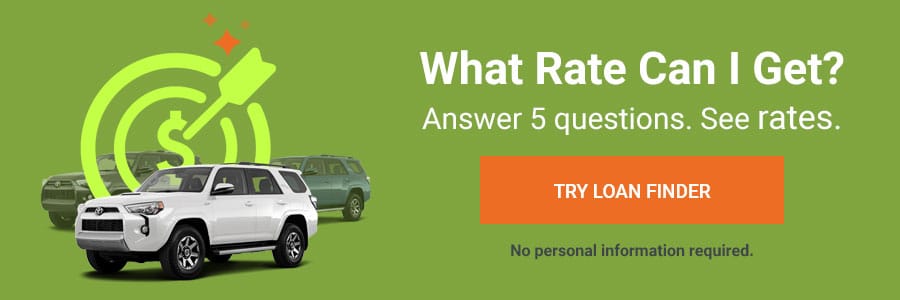Breakdowns are a bummer, but roadside assistance turns a major hurdle into a speed bump.
Whether you’re flying down the freeway on your next big adventure or just heading to work, vehicle breakdowns are enough to ruin anyone’s day. One thing that can make it a lot smoother is a roadside assistance plan that can help you get back on the road, or at least to a repair facility.
Roadside assistance plans vary widely. Some are free and act more as a glorified dispatcher, while others come with a fee but completely cover most of the services you might need. There’s a good chance you’re already even covered by some type of roadside assistance plan.
Keep reading to find out if you already have emergency roadside assistance coverage, whether it’s enough, and how much it might cost to get better roadside coverage.
What Is a Roadside Assistance Plan?
Vehicle breakdowns are unfortunately common. About 69 million car breakdowns happen every year, according to Agero, a company that provides driver services.
Roadside assistance programs are services that you can call from your cell phone or request help through a mobile app in order to get whatever help you need. That could include a wide range of things, such as:
- Jump starts
- Towing service to a repair shop
- Fuel delivery, if you run out of gas
- Winching, in case you get stuck in snow or mud
- Unlocking your vehicle, if you accidentally locked the keys inside
- Replacing a flat tire, dead battery, or other mechanical repairs
Roadside assistance plans are often included as a free perk with some other services, such as credit cards or memberships. These types of plans generally offer basic-level services with more limitations.
For example, they may send someone out to deliver a gallon of gas to you if you run out, but you’ll be charged for the gas itself. Or they may send out a tow truck, but any distance more than five miles may be billed to your credit card.
You can also purchase premium roadside assistance plans which offer more generous assistance. They may cover more services entirely, or tow your car much farther without charging you.
Here is a comprehensive list of the most common roadside assistance providers, including what’s covered and how much it costs:
Car Insurance
Most car insurance companies such as State Farm and Progressive offer roadside assistance services, generally as an add-on, along with other auto insurance options. It can be surprisingly affordable, with an annual fee around $10 to $25.
Some companies offer standalone memberships or one-time-use fees, even if you don’t have an auto insurance policy with them. If you don’t get your car insurance from Allstate, for example, you can pay a $79 per-year or $119 per-tow fee for roadside assistance.
Each insurance provider will vary in exactly what’s covered. But in general, these tend to be more generous, offering further towing distances and more services without additional charges.
For example, Geico’s roadside assistance coverage offers towing (up to 20 miles), battery jump starts, tire changes (with your own spare), winching to get your car unstuck, and lockout service all for no additional fee.
AAA
The American Automobile Association (or AAA) offers roadside assistance coverage if you’re a member. The cost of AAA membership varies depending on where you live. In Washington state, for example, a Basic membership costs $60 per year and includes the following services, among others:
- Free towing up to five miles
- Fuel delivery (charged at the current pump price)
- Winching truck
- $50 worth of locksmith services
If you upgrade to a Plus membership ($99 per year), you’ll get free fuel deliveries, free towing up to 100 miles, and help from a second winching truck, if you need it. A Premier membership ($131 per year) adds on free towing up to 200 miles and $250 worth of locksmith services.
AARP
If you’re a member of the American Association of Retired Persons (AARP), then you’re eligible for a discount on roadside assistance plans sold through Allstate.
You’ll get a 10% discount on its basic roadside assistance plan ($62 instead of $69) and a 20% discount on a premium roadside assistance plan ($119 instead of $149). If you pay an additional $40 fee, you can also cover members of your family, even if they’re not AARP members themselves.
Here is what’s included:
- Jump starts
- Fuel delivery
- Tire changes
- Locksmith services
- $1,500 worth of trip interruption insurance (premium plan only)
- Up to three service calls per year (seven on the premium plan)
- Tows up to 10 miles (up to 100 miles on the premium plan)
Credit Cards
Some credit cards offer roadside assistance coverage as an included perk. But like with most credit cards, you need to know how they work first because it might not be how you expect. Often, coverage is limited to a certain amount, and if you exceed that, your credit card company will bill the excess right to your credit card.
You can often find the details of any roadside assistance plans your credit card offers by checking your credit card agreement or online account. If you can’t find anything listed, try calling up the number on the back of your card to get help with figuring out what benefits you have.
American Express
Some — not all — American Express cards come with roadside assistance. The details depend on the card, however. For example, some Amex cards offered through Navy Federal Credit Union charge you $59.95 per service call, even for basic requests like a jump start or fuel delivery.
Mastercard
Many Mastercards come with the RoadAssist emergency roadside service plan as a regular cardholder perk. You can get help with common things like jump starts, tire changes, and gas delivery, all at pre-negotiated rates that will be charged to your credit card.
This program is a bit more limited because you can only use it in well-traveled areas — not while you’re out camping in the boonies, for example.
Visa
All Visa cards come with the Roadside Dispatch assistance plan. Just like with the Mastercard plans, services aren’t free, but your card will be charged according to pre-negotiated rates for each service. You can get help with common things like winching, lockouts, and jump starts.
Car Manufacturer Warranties
Some car manufacturers offer roadside assistance as a part of their option extended warranty coverage. Chevrolet offers roadside assistance through Allstate as a part of its warranty, for example, and it includes:
- Jump starts
- Fuel delivery
- Locksmith services
- Flat tire changes (using your spare)
- Towing to the nearest Chevrolet dealership
Vehicle Service Contracts
If your warranty period has lapsed or you’ve exceeded the mileage limit, you won’t be able to take advantage of those services. That’s where vehicle service contracts, or VSCs, come in.
VSC plans can cover the cost of mechanical failures, repairs, and offer roadside assistance. They can be purchased directly from the manufacturer or dealership when you first buy your car. But you can also purchase them at any time from independent third-party companies, including when you refinance.
VSCs differ from warranties in that they’re a separate service where the provider agrees to pay for the repairs covered by your specific policy. But similar to warranties, VSCs are no longer applicable once you reach the maximum mileage allowed by your plan, or the policy’s term expires.
Cell Phone Provider
Some cell phone service providers offer roadside assistance coverage as an optional add-on, tied to your phone number.
AT&T
AT&T no longer offers this service for new customers, but if you already have it, you can still use it. It follows your service line (not your car), so you can use it even if you’re a passenger in your friend’s car.
It can be used up to four times a year and covers up to $75 worth of services for free on all of the things you’d expect, like lockouts, jump starts, tire changes, and more.
Verizon
Verizon’s service costs $4.99 per month, per line. It covers the following:
- Fuel delivery
- Winching truck
- Towing up to 10 miles
- Charging your car’s battery
- Replacing a flat tire (with your own spare)


What To Do if You Don’t Have Cell Phone Coverage
Roadside assistance coverage is great — if you have a way to call someone. But as anyone who’s driven much knows, you don’t always have cell phone coverage. This can limit the usefulness of emergency road service.
This is why it’s important to know what to do in the off chance you break down without cell phone coverage. Here are some quick tips:
- Send a text message: If your service is flitting in and out, a text message uses far less data than a phone call. Text someone to let them know where you’re at, and to send help.
- Use a white flag: Tying a white flag or rag to your car’s antenna or another visible spot sends a sign to any passing troopers that you need assistance.
- Stay in your car: It’s best to lock your car and stay in it. Don’t accept any rides from strangers. If they stop, ask them to call for help for you when they get to a phone. If you do need to leave your car, always leave a note about where you’re going, the time, and details about anyone you’re leaving with.
- If it’s an emergency, call 911: Your cell phone carrier might not have coverage in that area, but another provider might. And under FCC law, if you dial 911 and there is another provider that reaches you, they have to patch you through so you can get assistance.
Should I Get a Roadside Assistance Plan?
If you drive a dependable new car and you have plenty of savings or friends and family to rely on to help you out if your car breaks down, you may not need roadside assistance. But if it gives you peace of mind, it’s a worthwhile thing to consider, especially given how affordable it can be.
If you’re interested in purchasing a plan, start with your credit cards or any organizations you’re a member of. See if you’re already covered by a roadside assistance plan, and if so, what the details are.
If you’re not currently covered by a plan or if you want better coverage, a plan from auto insurance companies is likely the best option. A membership in a motor club or group like AARP or AAA can also be a great help, especially if you plan to take advantage of its other benefits.
About The Author
RateGenius
A better way to refinance your auto loan. RateGenius works with 150+ lenders nationwide to help you save money on your car payments. Since 1999, we've helped customers find the most competitive interest rate to refinance their loans on cars, trucks, and SUVs. www.rategenius.com
;)



